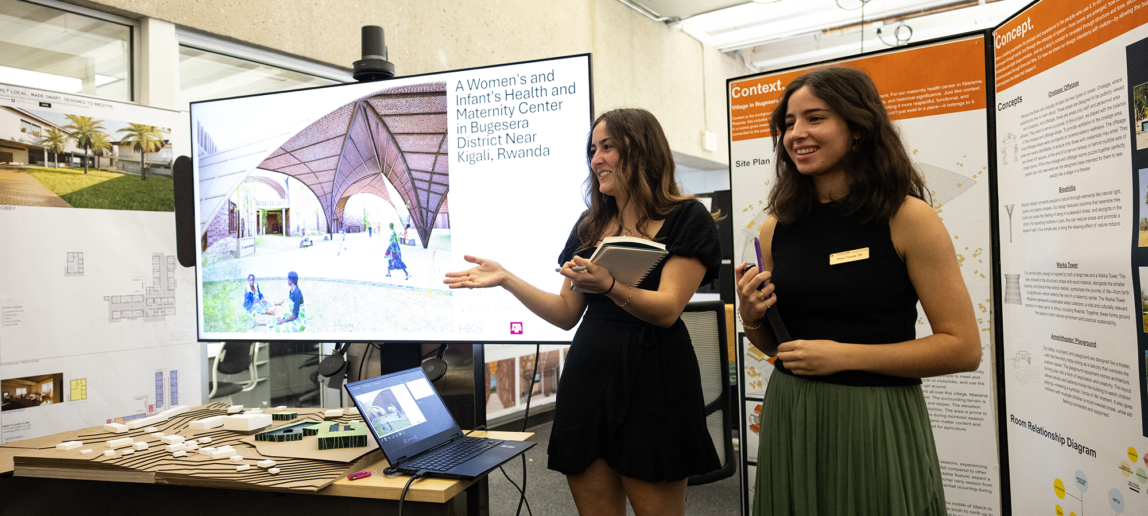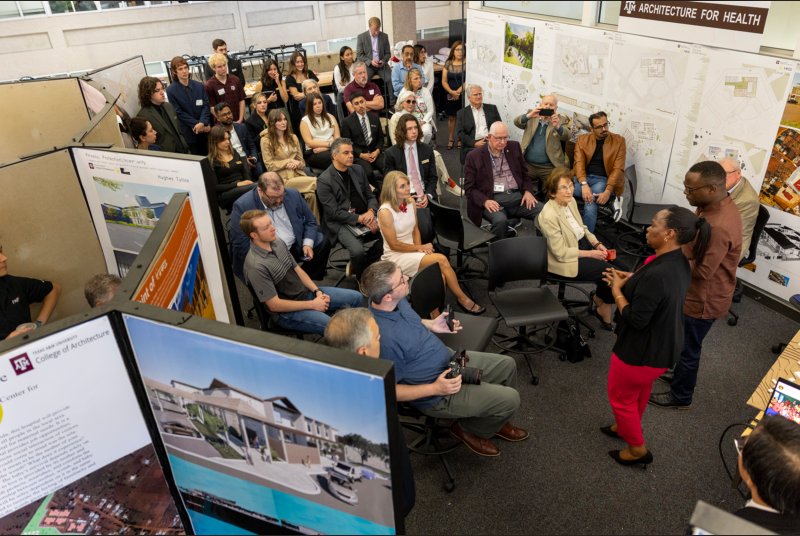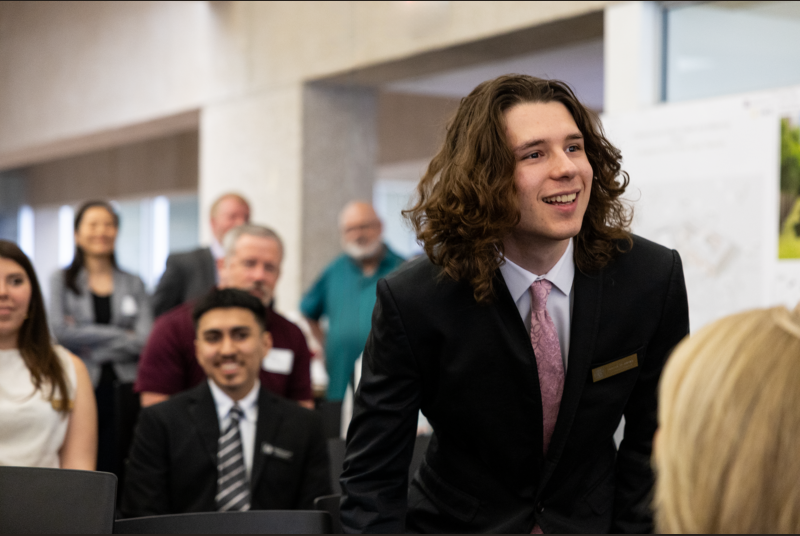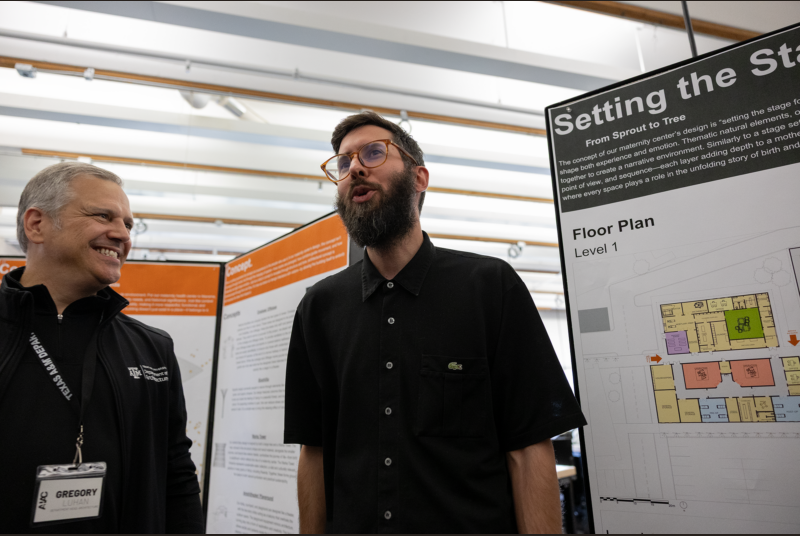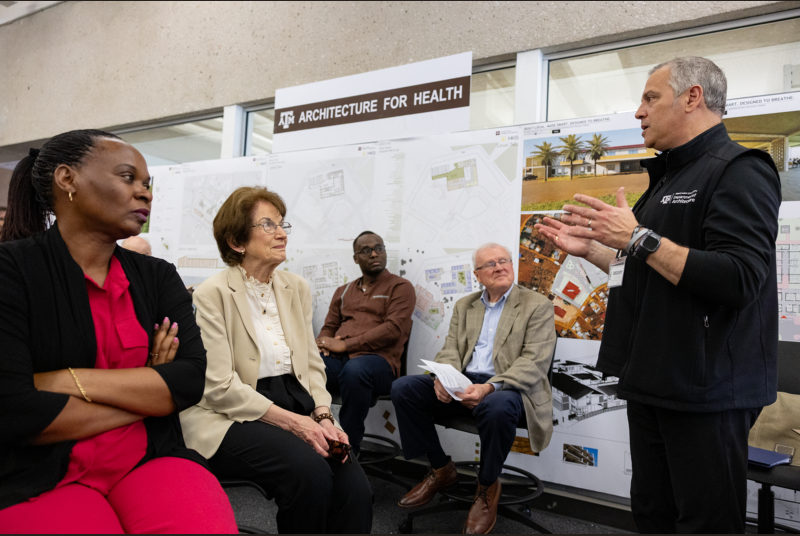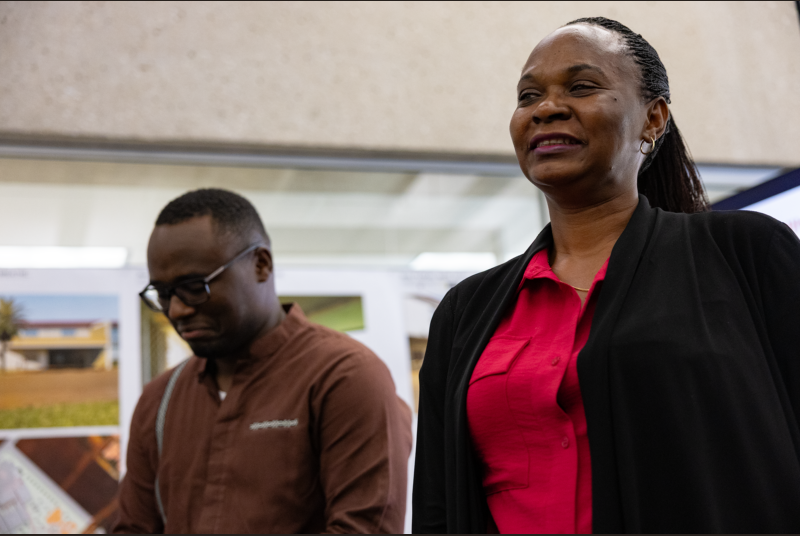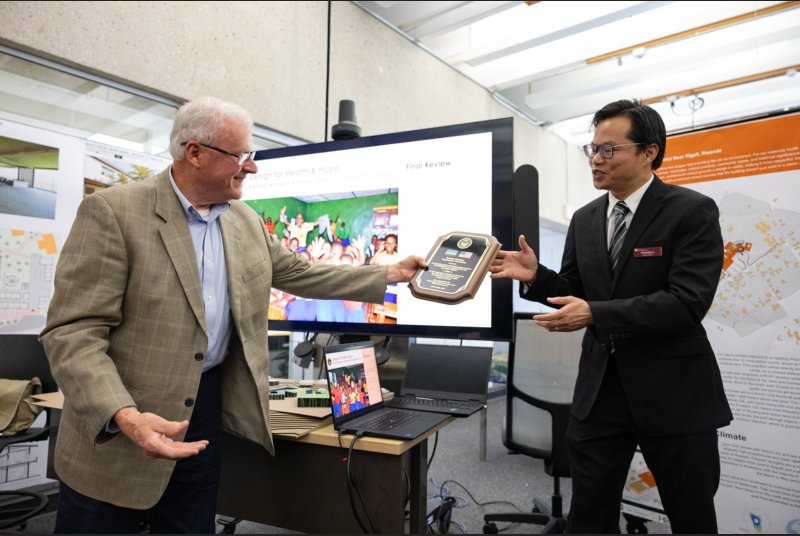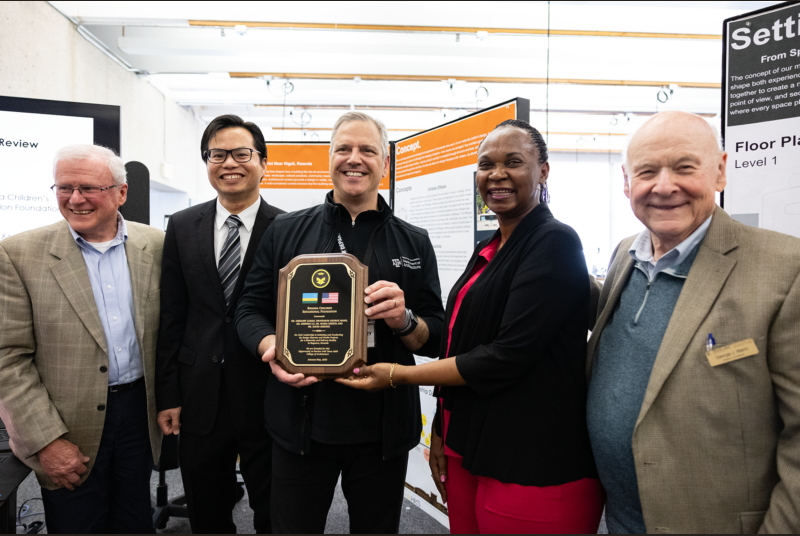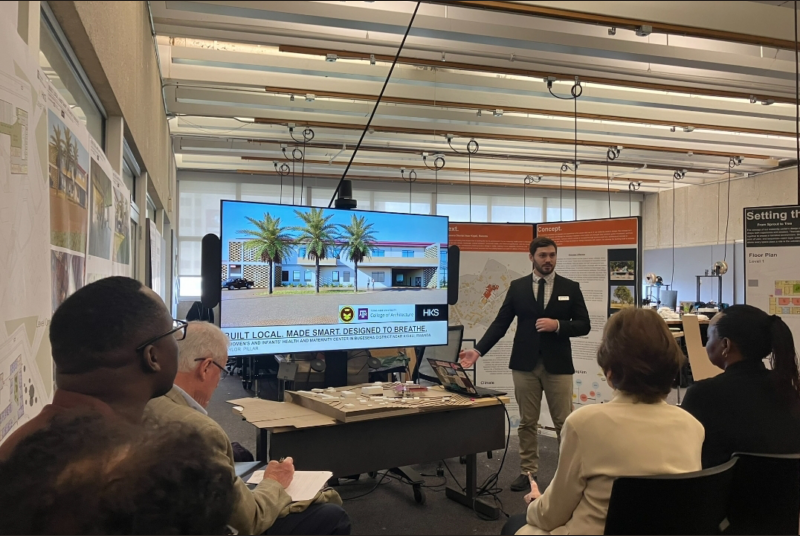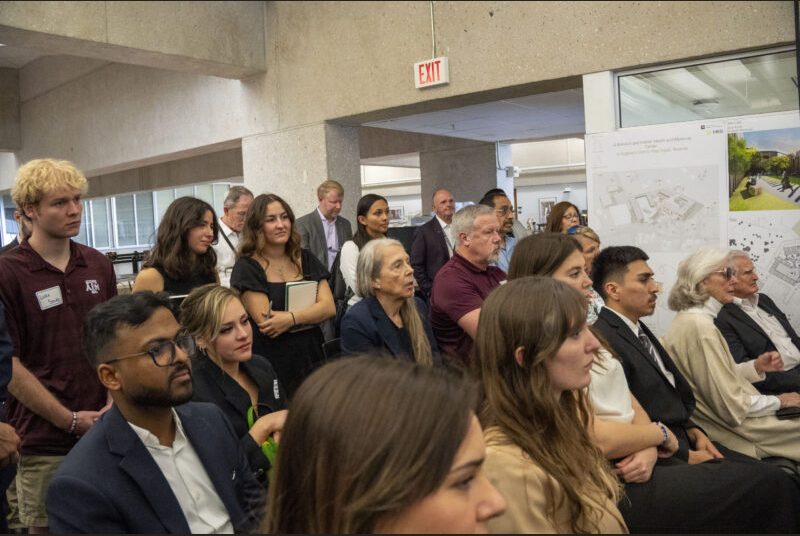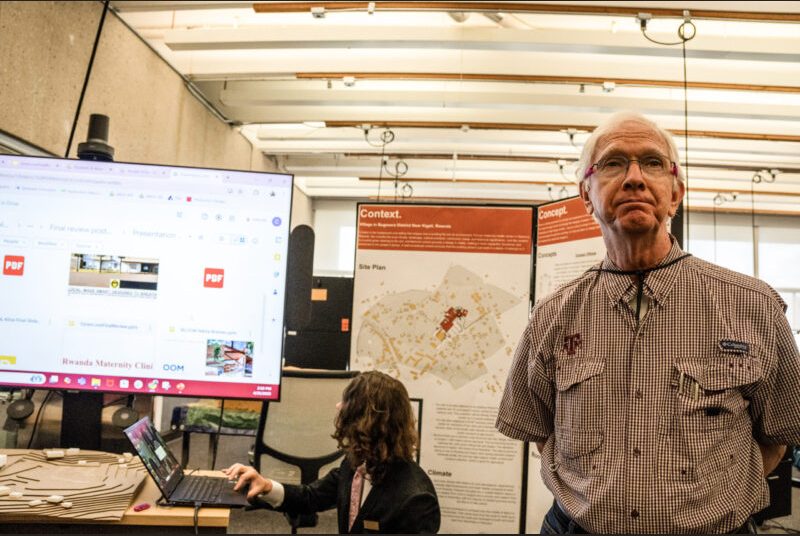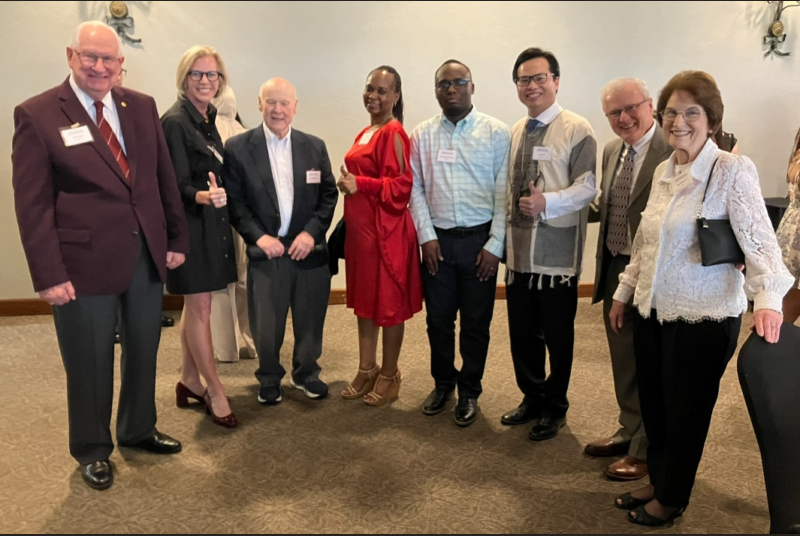Texas A&M Architecture Students Advance Global Health Through Rwanda Maternity Center Project
Students from the Texas A&M University College of Architecture presented their final designs for a Women’s and Infants’ Health and Maternity Center in Rwanda’s Bugesera District near Kigali on Friday, April 25, 2025, at the Langford Architecture Center. More than 50 participants, including reviewers, family members, community leaders, faculty, and A+IAC members, joined the meeting.
The event marked the culmination of a collaborative, interdisciplinary research and design effort, bringing together students, faculty, clients, and practitioners to address critical maternal and infant healthcare needs in one of Africa’s fastest-growing regions. According to the World Health Organization, Rwanda’s maternal mortality ratio was 259 deaths per 100,000 live births in 2020—more than ten times higher than that of the United States.
The project was co-hosted by the Rwanda Children Educational Foundation (RCEF), represented by Chairperson Dr. Alan W. Graustein and Executive Director Jeanine Mukarubega, alongside faculty from the Department of Architecture at Texas A&M.
A Global Challenge, A Local Solution
Throughout the spring semester, students in the Architecture for Health program worked closely with clients and community leaders in Rwanda, meeting weekly via Zoom to gather insights on local conditions, healthcare gaps, and cultural needs. The maternity center project tackled urgent issues such as limited access to transportation, shortages of healthcare services, and the need for sustainable, community-centered facilities.
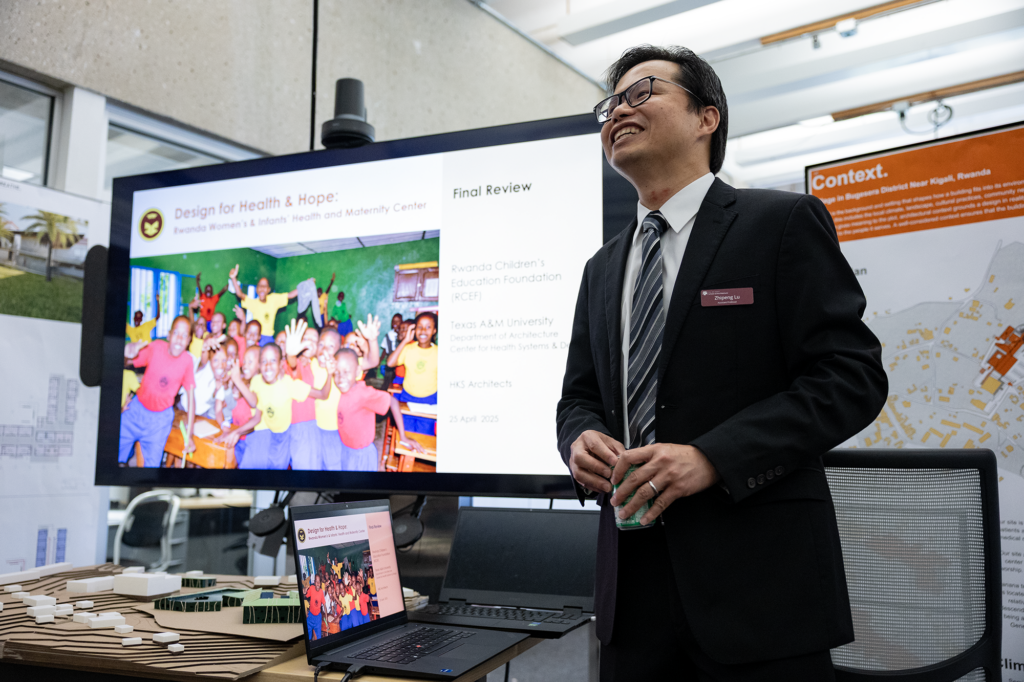
“We are not merely designing buildings; we are reimagining the future of health through architecture,” said Dr. Zhipeng Lu, studio instructor, who guided students in considering factors like climate, sustainability, construction materials, maternal education, and healthcare access in the Rwandan context.
Students proposed a range of innovative design solutions, including a maternal village concept that allows expectant mothers to stay safely on-site prior to delivery—a direct response to transportation barriers identified through their research.
A Legacy of Impact Through Architecture for Health
Since its founding, Texas A&M’s Architecture for Health program has cultivated leaders in healthcare design through real-world research, interdisciplinary education, and global engagement. Emeritus Professor George J. Mann, who launched the program more than 60 years ago, highlighted the significance of the Rwanda project.
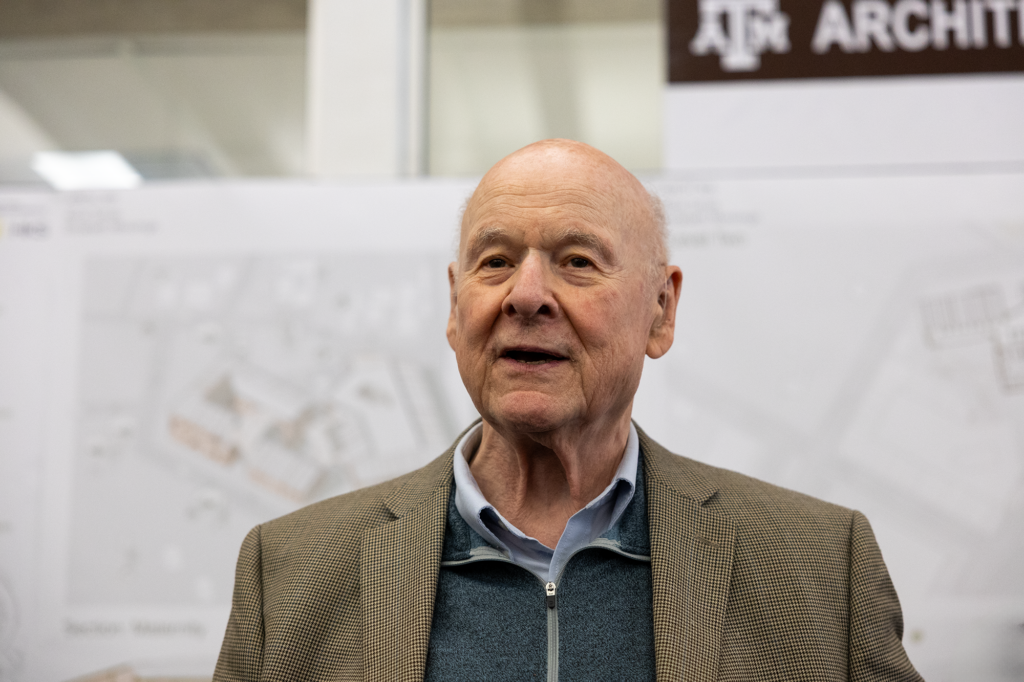
“The students proposed innovative ideas that directly address the social and healthcare challenges of the region,” Mann said. “It’s an extraordinary example of academic work making a real-world impact.”
Ronald L. Skaggs, FAIA, FACHA, FHFI, Chairman Emeritus of HKS Architects, also praised the program’s reputation for producing graduates who lead globally in healthcare planning and design.
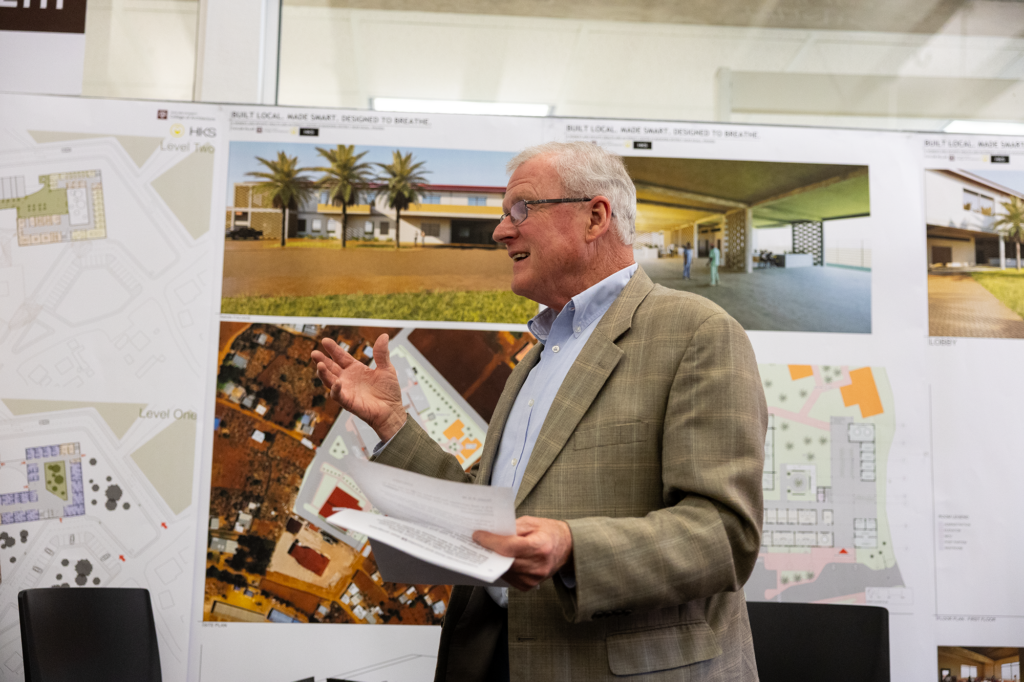
“The students and faculty have been working with people directly in Rwanda, and have been communicating weekly via zoom to gain a knowledge of local conditions in Rwanda, and to review their design concepts with the users” said Alan Graustein.
Student Voices: Design with Empathy and Purpose
Students described the project as one of the most challenging and rewarding experiences of their academic careers.
“This project opened my eyes to architecture beyond the United States,” said Taylor Pillar, a participating student. “Through careful programming and sustainable design strategies like natural lighting and ventilation, we aimed to create a place where mothers feel confident they will receive quality care.”
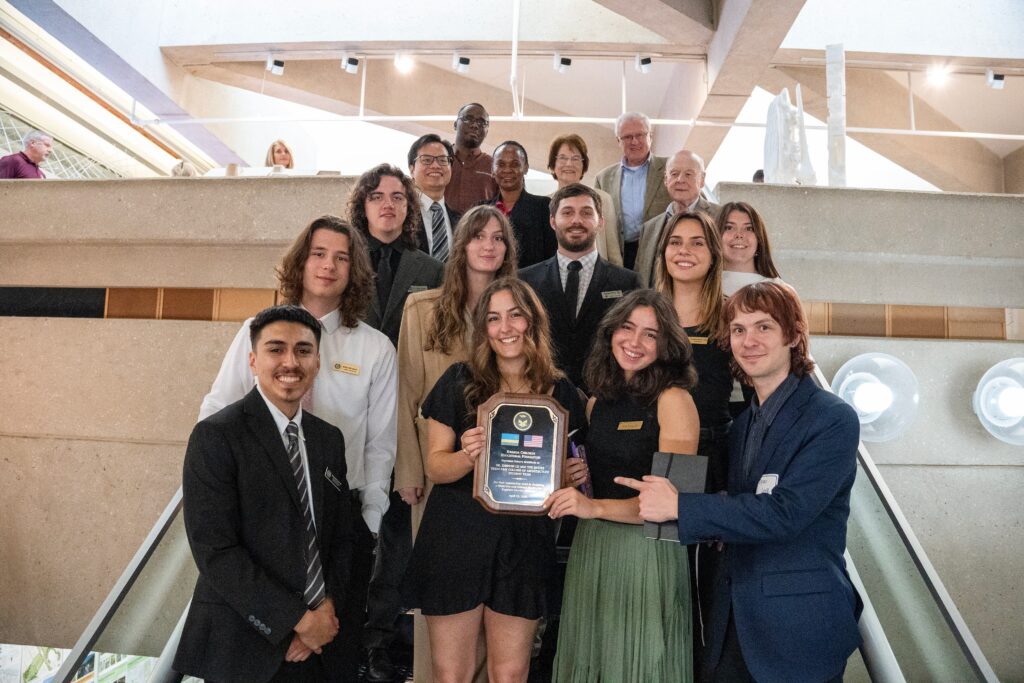
Calista Quinn, another student involved, reflected on the personal significance of the work. “Designing for a less developed country required us to rethink many assumptions,” Quinn said. “As a young woman, it was personal—I wanted to provide a sanctuary for future mothers experiencing one of the most vulnerable times in their lives.”
Quinn also credited the leadership of Dr. Lu and the collaboration with RCEF leaders like Dr. Alan W. Graustein and Jeanine Mukarubega. “The feedback and real-world connection made this one of the most meaningful projects I have worked on,” she said.
Browse through some of the student work that was produced to support this initiative. Use the arrows to scroll through the slideshow of student work.
An Impactful Discussion Featuring Jeanine and Harrison Gafurafura
Jeanine Mukarubega, executive director of the Rwanda Children Educational Foundation, traveled from Kigali, Rwanda, and spoke on April 25 at Texas A&M University. Mukarubega, who has dedicated her career to advancing education, healthcare access, and community development initiatives in Rwanda, shared firsthand insights into the urgent maternal health needs of the Bugesera District and the life-changing impact the new maternity center will provide.
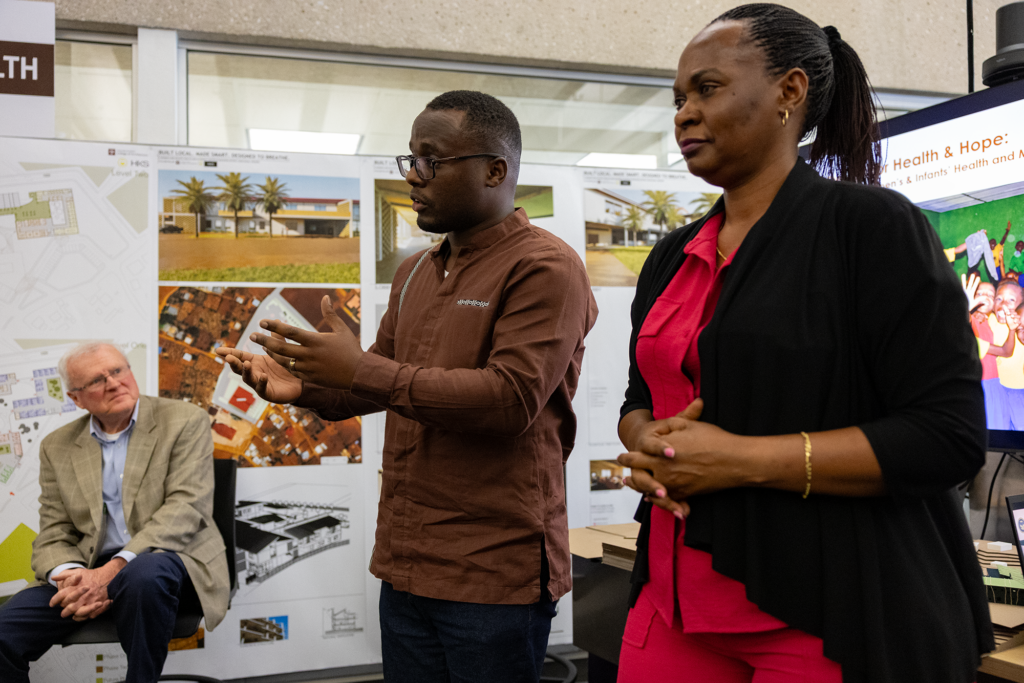
“A lot of women died because they were in labor, and there were so many of them and so few doctors,” said Mukarubega. “We also had a woman who was in labor and had to be put on a motorcycle—because that was the only transportation available—and she died on that motorcycle. The reason we are telling you this is to show you how what you are doing is amazing and will change their lives.”
She was accompanied by Harrison Gafurafura, her son and an interpreter based in Kigali, who helped ensure the conversation was accessible and meaningful for all attendees. Their participation strengthened the global collaboration between Texas A&M students and the Rwandan community, emphasizing the importance of culturally responsive and locally informed design solutions.
“As a lifelong hospital architect, I have never seen a university more capable of providing leadership in healthcare design than Texas A&M,” Sprague said.
The collaborative effort between the College of Architecture, the Center for Health Systems and Design, and the Rwanda Children Educational Foundation showcased Texas A&M’s commitment to transforming global health outcomes through research, innovation, and partnership.
By addressing the built environment’s role in healthcare, the students helped pave the way for a future where equitable, sustainable, and human-centered design transforms lives around the world.
Photo Gallery
Conclusion
The design of a Women’s and Infants’ Health and Maternity Center in Rwanda’s Bugesera District near Kigali has made a significant impact for both Texas A&M students and the communities it aims to serve.
Students in the Architecture for Health program gained valuable real-world experience by working directly with clients, faculty and community leaders throughout the spring semester. Through weekly virtual meetings and collaborative research, they developed culturally responsive, sustainable design solutions for a region facing critical maternal and infant health challenges.
At the same time, the people of Rwanda benefited from focused research and thoughtful design efforts that addressed pressing healthcare needs—offering a potential blueprint for improving access to maternal care in one of Africa’s fastest-growing areas.
Participants and Advisors
Please review the following resource for more information on this project.
The list of participants and advisors for the design of a Women’s and Infants’ Health and Maternity Center in Rwanda’s Bugesera District near Kigali.

